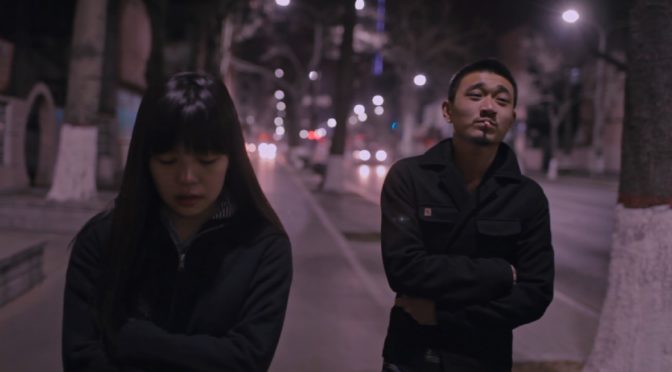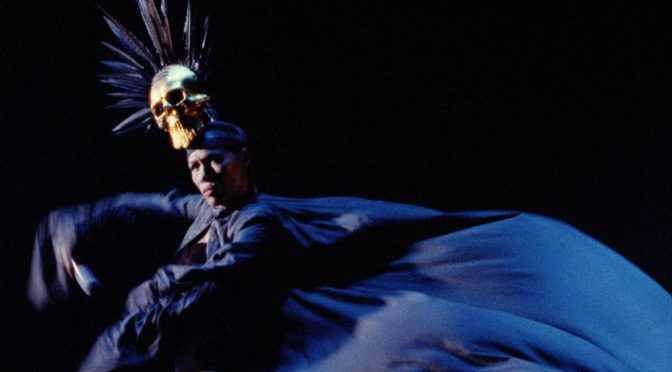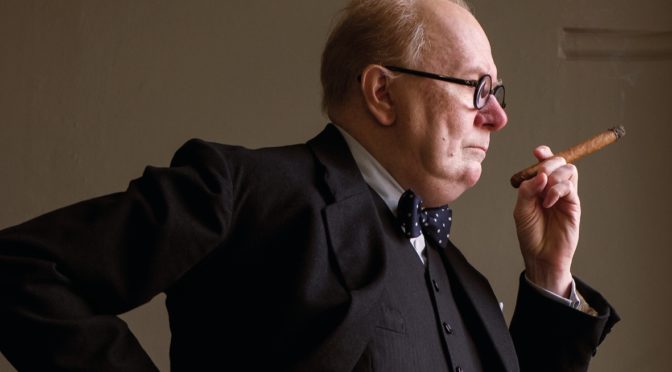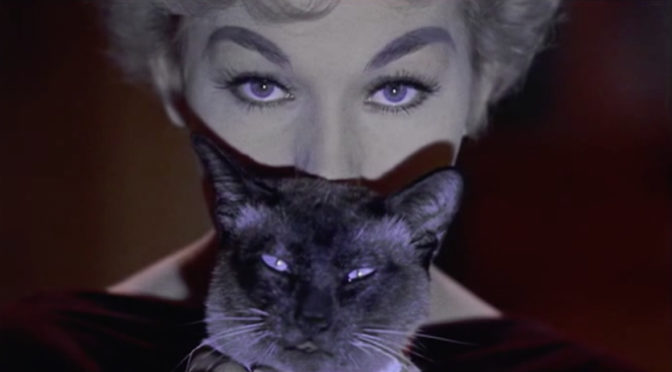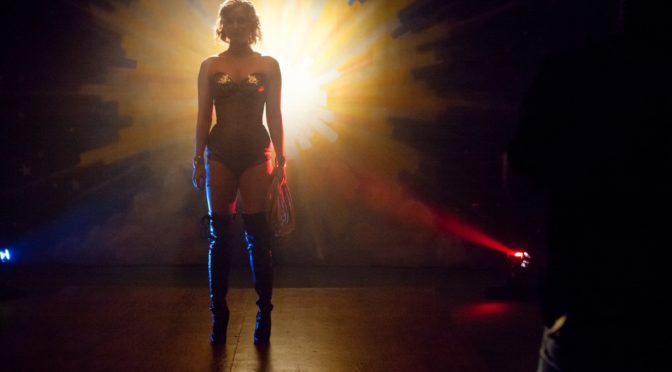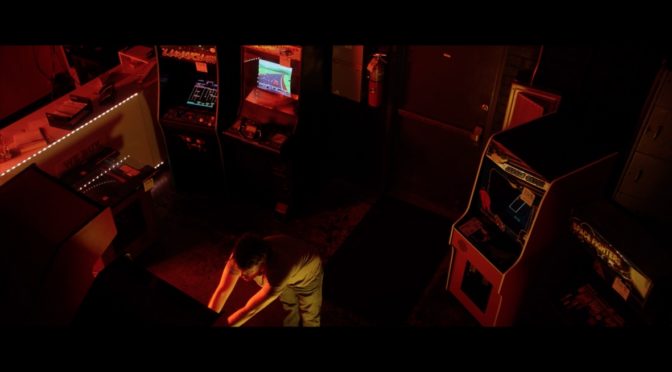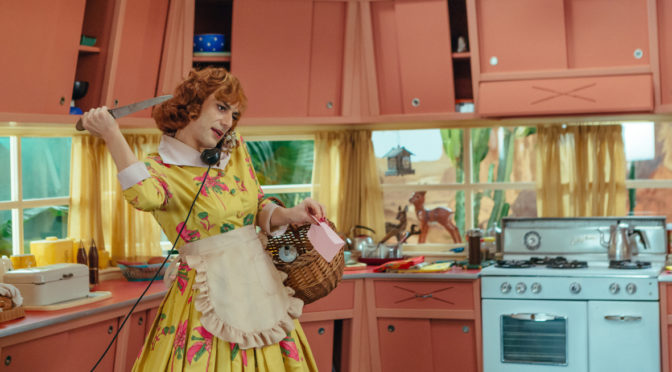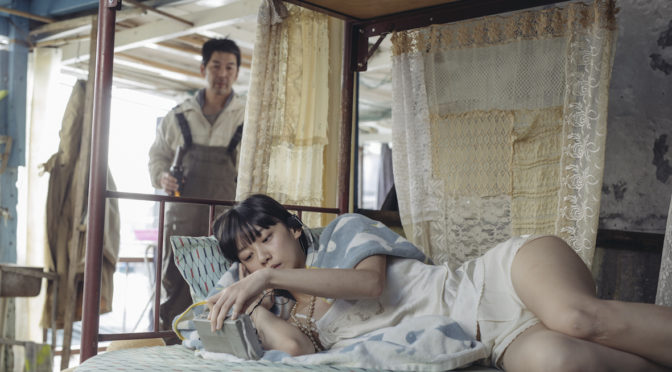La 35° edizione del Torino Film Festival ha reso omaggio, con una retrospettiva quasi completa, al maestro Brian De Palma, uno dei registi amati dalla direttrice del festival Emanuela Martini, la quale lo ha definito così: «De Palma è un mago dello schermo, uno di quei registi ai quali è quasi sempre riuscita la magia di tenere lo spettatore attaccato alla sedia con gli occhi fissi sullo schermo , un maestro di stile, erede di Hitchcock, ma anche di Godard e di Ejzenštein». Continua la lettura di Retrospettiva di Brian De Palma
Archivi tag: in evidenza
” The Scope of Separation” by Yue Chen
Versione inglese a cura del Master in Traduzione per il Cinema, la Televisione e l’Editoria Multimediale
Article by: Gianmarco Perrone
Translation by: Valeria Tutino
Boredom, alcohol and cigarettes fill the days of Liu Shidong, the apathetic main character of The Scope of Separation, the first work of the young Chinese director Yue Chen. Liu – as he narrates in voice over – has inherited a large amount of money from his deceased father: this allows him not to work and devote himself to his (presumed) interest. The story hardly proceeds with his encounter with two young women, very different from each other, and with the attempt to work in business: a meaningless plot, like Liu’s life, that leaves room to contemplation and to long and empty dialogues. The choice of the script is undoubtedly well considered, but it undermines the viewer’s involvement. However it fits perfectly to the content of the movie.
Continua la lettura di ” The Scope of Separation” by Yue Chen
” The Scope of Separation,” di Yue Chen
Noia, alcool e sigarette riempiono le giornate di Liu Shidong, apatico protagonista di The Scope of Separation, opera prima del giovane regista cinese Yue Chen. Liu – come ci racconta lui stesso in voice over – ha ereditato una cospicua somma dal padre scomparso: ciò gli permette di non lavorare e dedicarsi al suo (presunto) divertimento. La storia prosegue a fatica con l’incontro con due ragazze, molto diverse tra loro che tentano di dedicasi agli affari: una trama insignificante, come la vita di Liu, che lascia spazio alla contemplazione e a lunghi e vacui dialoghi. Una sceneggiatura senz’altro ponderata, che mina però il coinvolgimento dello spettatore. Continua la lettura di ” The Scope of Separation,” di Yue Chen
“Grace Jones: Bloodlight and Bami” by Sophie Fiennes
Versione inglese a cura del Master in Traduzione per il Cinema, la Televisione e l’Editoria Multimediale
Article by: Dora Bugatti
Translation by: Melissa Borgnino
Grace Jones: model, actress, singer, icon. But who is really the Woman that hides behind her character’s mask? Grace Jones: Bloodlight and Bami begins this way: with the main character taking off a mask, revealing a face with harsh and androgynous traits, to the tune of Slave to the Rhythm. To a fan who asks her when she is going to star in another film, she answers that she’s already got her own. Continua la lettura di “Grace Jones: Bloodlight and Bami” by Sophie Fiennes
“Grace Jones: Bloodlight and Bami” di Sophie Fiennes
Grace Jones: modella, attrice, cantante, icona. Ma chi è la Donna che si cela dietro alla maschera del personaggio? Grace Jones: Bloodlight and Bami comincia proprio così, con la protagonista che si sfila una maschera rivelando il suo volto dai tratti duri ed androgini sulle note di Slave to the Rythm. Ad un fan che chiede quando reciterà in un altro film, lei risponde di avere già il suo. Continua la lettura di “Grace Jones: Bloodlight and Bami” di Sophie Fiennes
“Darkest Hour” by Joe Wright
Versione inglese a cura del Master in Traduzione per il Cinema, la Televisione e l’Editoria Multimediale
Article by: Annagiulia Zoccarato
Translation by: Federica Franzosi
Before Christopher Nolan’s Dunkirk, the Dynamo operation and the retreat toin Dunkerque had already been the protagonists subject of a moving long shot in Joe Wright’sAtonement. Ten years later, Wright himself deals again with this famous and important
event of British history one more time, but he does it from the backstage, telling the story of how it all came to that and mainly talking about the man behind that desperate rescue (which later turned out to be a very important moral victory): Winston Churchill.
“Darkest Hour” di Joe Wright
Prima dell’ottimo Dunkirk di Christopher Nolan, l’operazione Dynamo e la ritirata da Dunkerque erano state protagoniste di un toccante piano sequenza in Espiazione di Joe Wright. Dopo dieci anni, Wright stesso torna a cimentarsi con questa celebre e importante pagina della storia britannica, ma lo fa dietro le quinte raccontando la storia di come ci si arrivò e soprattutto del fautore di quel disperato salvataggio che si rivelò essere un’importantissima vittoria morale: Winston Churchill.
RETROSPECTIVE REVIEW “NON DIRE GATTO… – A WATCHED CAT…”
Versione inglese a cura del Master in Traduzione per il Cinema, la Televisione e l’Editoria Multimediale
Article by: Fabio Ferrari e Chiara Gioffrè
Translation by: Federica Franzosi
The main characters on the poster for the 35th edition of the Torino Film Festival are Kim Novak and Pyewacket the cat: it is not a surprise, then, that in this edition of the TFF there has been a special retrospective dedicated to our four-legged friends, a homage from the director Emanuela Martini – a cat and film lover – to the “BESTIALE! Animal Film Stars” exhibit at the National Museum of Cinema.
Continua la lettura di RETROSPECTIVE REVIEW “NON DIRE GATTO… – A WATCHED CAT…”
“Grandeur et décadence d’un petit commerce de cinéma” di Jean-Luc Godard
Anni Ottanta, il regista Gaspard Bazin vuole fare un film alla vecchia maniera, per cui sta cercando fondi e attori; si rivolge quindi al produttore Jean Almereyda, che però è ormai in declino e fa sempre più fatica a ottenere il capitale necessario a portare avanti i propri progetti.
Continua la lettura di “Grandeur et décadence d’un petit commerce de cinéma” di Jean-Luc Godard
“The Crescent” by Seth A. Smith
Versione inglese a cura del Master in Traduzione per il Cinema, la Televisione e l’Editoria Multimediale
Article by: Roberto Guida
Translation by: Emanuela Ismail
A mother and her son, alone in a godforsaken house along a grey and sandy shore. It is always hard to deal with loss. Beth hopes that the peace of the beach could put life on a normal footing. She throws herself at the multiform and multicoloured abstractionism of her art, but she feels nothing anymore. Emotions are blown away, are lost in the sea that seems to hold everything to the headland, without leaving a way out. The two of them are contained in a dreamlike blaze in which the stranger presences come to life, threatening to separate them for an higher truth.
“The Crescent” di Seth A. Smith
Una madre e suo figlio, soli in una casa dimenticata da Dio su una costa grigia e sabbiosa. È sempre dura superare un lutto. Beth spera che la calma della spiaggia possa riportare la normalità, possa essere un ritorno alla vita. Si lascia andare all’astrattismo multiforme e multicolore della sua arte ma ormai non sente più nulla. Le emozioni sono state spazzate via, si sono smarrite in quel mare che sembra trattenere ogni cosa nell’area del promontorio, senza lasciare via di fuga. I due sono circoscritti in un alone onirico nel quale le più strane presenze prendono vita, minacciando di separarli in nome di una verità superiore. Continua la lettura di “The Crescent” di Seth A. Smith
“The Man Who Invented Christmas – Dickens, L’uomo che inventò il Natale” by Bharat Nalluri
Versione inglese a cura del Master in Traduzione per il Cinema, la Televisione e l’Editoria Multimediale
Article by: Fabio Ferrari
Translation by: Valeria Tutino
In 1843, Charles Dickens enjoys of a vast reputation after the success of Oliver Twist. Sadly, three heavy flop send him on the verge of bankruptcy. Plagued by a deep creative crisis, Dickens founds inspiration again after a brief encounter with an old tightwad. With only six weeks to complete the new book, he starts to write what will become A Christmas Carol. During the writing process, the characters come to life, between advices and warnings, in front of the author that can finally deal with his troubled past, in particular his strained relationship with his father.
“The Man Who Invented Christmas – Dickens, L’uomo che inventò il Natale” di Bharat Nalluri
Nel 1843 Charles Dickens gode di un’immensa fama in seguito al successo di Oliver Twist. Purtroppo tre pesanti flop lo spediscono sull’orlo della bancarotta. Afflitto da una profonda crisi creativa, Dickens ritrova l’ispirazione dopo il breve incontro con un vecchio taccagno. Con sole sei settimane a disposizione per completare il nuovo romanzo, inizia così a scrivere quello che diventerà Canto di Natale. Durante la stesura del libro, i personaggi “prendono vita”, tra consigli e avvertimenti, dinanzi all’autore che ha finalmente l’occasione di fare i conti con il proprio tormentato passato, e in particolare con il rapporto conflittuale con il padre. Continua la lettura di “The Man Who Invented Christmas – Dickens, L’uomo che inventò il Natale” di Bharat Nalluri
“Professor Marston & Wonder Women” by Angela Robinson
Versione inglese a cura del Master in Traduzione per il Cinema, la Televisione e l’Editoria Multimediale
Article by: Martina Bonfiglio
Translation by: Cristina Di Bona
A relationship that had to be secret, an unconventional love story that few persons were aware of, born behind the scenes of the comic book Wonder Woman. An extremely political film, which makes us think about all the steps that have been done and all those that will have to be done.
Continua la lettura di “Professor Marston & Wonder Women” by Angela Robinson
“Professor Marston & Wonder Women” di Angela Robinson
Un rapporto che doveva essere tenuto segreto a tutti i costi, una storia d’amore davvero non convenzionale nata dietro le quinte del fumetto Wonder Woman e di cui pochissimi all’epoca erano a conoscenza. Un film straordinariamente politico che ci fa riflettere sui passi fatti e su quelli che dovremmo ancora fare. Continua la lettura di “Professor Marston & Wonder Women” di Angela Robinson
“Sequence Break” di Graham Skipper
Nel mondo dei videogames, l’espressione sequence breaking significa rompere la sequenza prestabilita degli eventi all’interno del gioco. Superare cioè i vari livelli senza completare tutti i passaggi e le azioni richieste dal gioco stesso. Se siete riusciti in qualche modo ad ottenere oggetti utili in anticipo, o a saltare segmenti del gioco per portarlo a compimento più velocemente, allora potete dire di aver compiuto una sequence break. Continua la lettura di “Sequence Break” di Graham Skipper
“FAVOLA” by SEBASTIANO MAURI
Versione inglese a cura del Master in Traduzione per il Cinema, la Televisione e l’Editoria Multimediale
Article by: Maria Cagnazzo
Translated by: Melissa Borgnino
A housewife wearing a dress from the Fifties comes down a pastel-colored spiral staircase. She cries out a name: Lady. The woman is desperately looking for her interlocutor, chatting nonstop while walking around the room. It looks like she is talking with a real person, but Lady is actually a dog, and a stuffed one no less. There’s not much to talk about with a lifeless animal. This is the first sequence of Favola (“Fairytale”) by Sebastiano Mauri, a film that astonishes the viewer from the very beginning.
“FAVOLA” DI SEBASTIANO MAURI
Lungo una scala elicoidale dai colori tenui scende una casalinga che indossa un vestito anni Cinquanta. Urla un nome: Lady. La donna cerca disperatamente la sua interlocutrice e mentre si accinge a esplorare la stanza chiacchiera incessantemente, dando l’impressione di rivolgersi ad una persona; Lady è invece un cane ed è anche impagliato. C’è dunque ben poco di cui parlare con una bestia senza vita. Così si apre la prima sequenza di Favola, film di Sebastiano Mauri, che sorprende lo spettatore fin dal primo istante. Continua la lettura di “FAVOLA” DI SEBASTIANO MAURI
“THE WHITE GIRL” by Jenny Suen and Christopher Doyle
Versione inglese a cura del Master in Traduzione per il Cinema, la Televisione e l’Editoria Multimediale
Article by: Andrea Venuti
Translation by: Valeria Alfieri
A young girl (Angela Yuen), who is allergic to sunlight, is obliged to live with her father in a fishermen village in the vicinity of Hong Kong; her physical and psychological discomfort is soothed by the meeting with a mysterious Japanese traveler. An uncommon and out-of-the-box relationship will spark between the two.
Continua la lettura di “THE WHITE GIRL” by Jenny Suen and Christopher Doyle
“THE WHITE GIRL” di Jenny Suen e Christopher Doyle
Una giovane ragazza (Angela Yuen), allergica al sole, è costretta a vivere con il padre in un villaggio di pescatori nei pressi di Hong Kong; il suo disagio fisico e psicologico è alleviato dall’incontro con un misterioso viaggiatore giapponese (Joe Odagiri). Tra i due nascerà una relazione insolita e fuori da ogni schema. Continua la lettura di “THE WHITE GIRL” di Jenny Suen e Christopher Doyle


